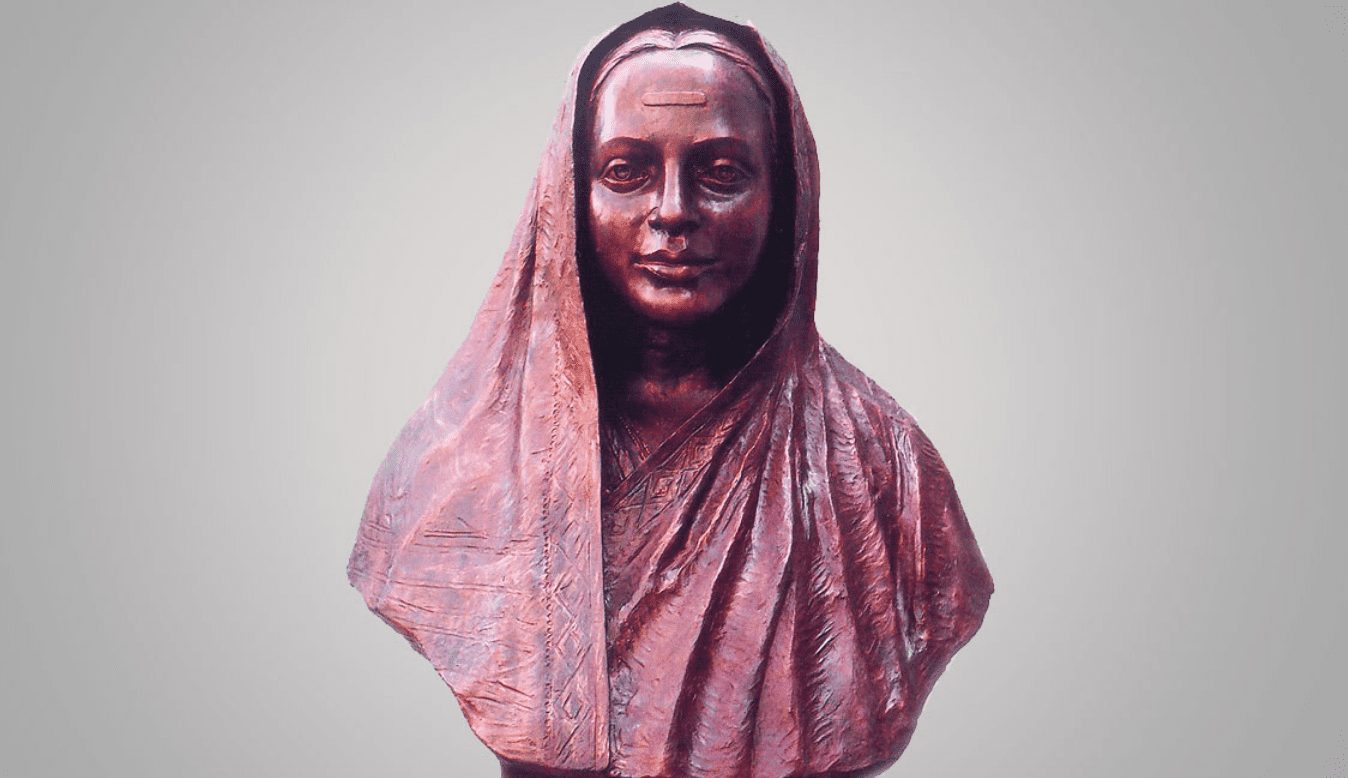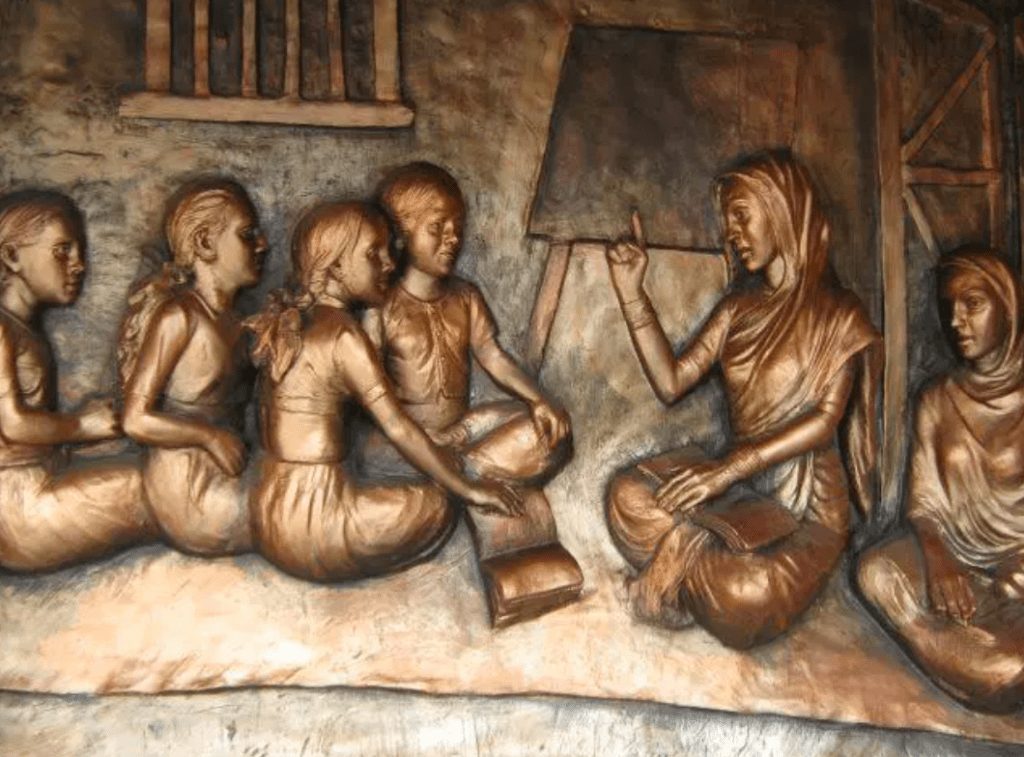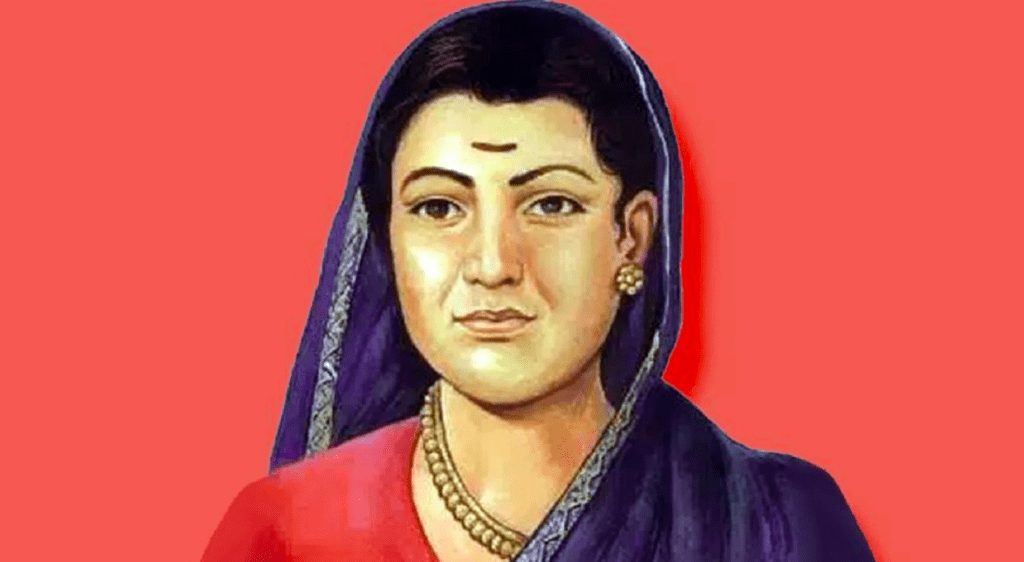Savitribai Phule: the First Female Teacher of India


A time when India was not even independent, and we were struggling through many sorts of social evils. Evils like discrimination in the name of caste, illiteracy, Sati pratha, child marriage were consuming our Indian society like termites. It was a period of history when British power had already done the worst to Indian heritage. We were going through our own individual struggles. Somehow Indians have forgotten the alluring, bewitching, past of India. During that time period, a woman stood up for the empowerment of women and fought for the women’s right. She was Savitribai Phule, the first female teacher of India.
“If you educate a man you educate an individual, but if you educate a woman you educate a nation,”
Savitribai was the elder daughter of Khandoji Neveshe Patil and Lakshmi, a farming family. She was born on January 3, 1831, in Naigaon Maharashtra. By the time she was just nine, she was married to twelve years old Jyotirao Phule. One of the leading figures of Maharastra’s social reform movement, Jyotirao Phule was a social activist, thinker, a way ahead of his time. He was a mentor to Savitribai. Her passion, eagerness towards studies was noticed and encouraged by Jyotirao. He was her first teacher who taught her to read and write. He supported her in each and every step of her further endeavors in the field of education as well as social reforms.
Education to women was just a dream during that time when these two strong-willed, unwavering powerhouse couple laid the foundation for the first indigenously- run school for female. She fought for women’s equality, through giving them education. She stood for women empowerment in men dominated society. Savitribai and her supportive husband had to face enormous difficulties. They were both excluded not just their community but their own families. But no matter what they stood up for their values. They received a helping hand from a friend Usman Sheikh and his sister Fatima Sheikh, who allowed them to use their premises for school. It was not an easy task. Then the parents had to be motivated. The fear against society and fear of being ostracized from their community stopped many from sending their girls to school.
A story of a fighter
The light of empowered started to spread everywhere. Savitribai was the first teacher of the school. She knew she had taken a big step, but there was no turning back. Her contribution was not only in the field of education. She made an outstanding contribution in the abolition of discrimination in the name of gender and caste. She made even more opponents when she started teaching children from the Mang and Mahar castes, who were looked down as untouchables.

It is said that she used to carry two saris to school since she was usually attacked by mud, stones and cow dung. But all these incidents made her more ambitious to reach her goal. Even after facing, such tremendous opposition it’s admirable and noteworthy to know that she went on to open 17 more such schools.
She was way too ahead of her time. She was a progressive thinker like her husband. She worked towards preventing female infanticide and widow killings. In 1863, a care center called ‘Balhatya Pratibandhak Griha,’ was commenced probably the first of its kind in India, to protect the lives of widows, rape victims, and their kids.
The upper conservative caste society was completely against the works of Jyotirao and Savitribai. The later was advocating the case of widow remarriage whereas Savitribai was working against Sati pratha, child marriage. She wanted to empower the young widows, educate them and bring them to the mainstream of life. She wanted to give a new identity to the young helpless widows who have lost everything in the name of beliefs, and tradition. Such kind of quest was met with a very strong hostility from the so-called caretakers of old traditions.
Achievements and other Endeavors of Savitribai

She worked shoulder to shoulder with her husband in eradicating many of the social evils. She was associated with the work of ‘Satyashodhak Samaj’ where the main objective was to free women from being exploited and oppressed in the hands of dominant groups of society. After the demise of her husband, she took the torch forward and led the Samaj forward till her last breath.
As a poet, she used to write against discrimination and the value of education. Posthumously her works were published as two books Kavya Phule (1934) and Bavan Kashi Subodh Ratnakar (1982).
Death of an eminent personality
She had devoted her whole life for the sake of humanity. While she was treating patients during the third global pandemic of the bubonic plague, she too contracted the disease and died on 10th March 1897.
She was known as the “Goddess of Education.” She symbolizes the power of knowledge, the inner strength of women. She will remain an inspiration to every weak and oppressed one and remembered for her selfless services.
Featured image source
